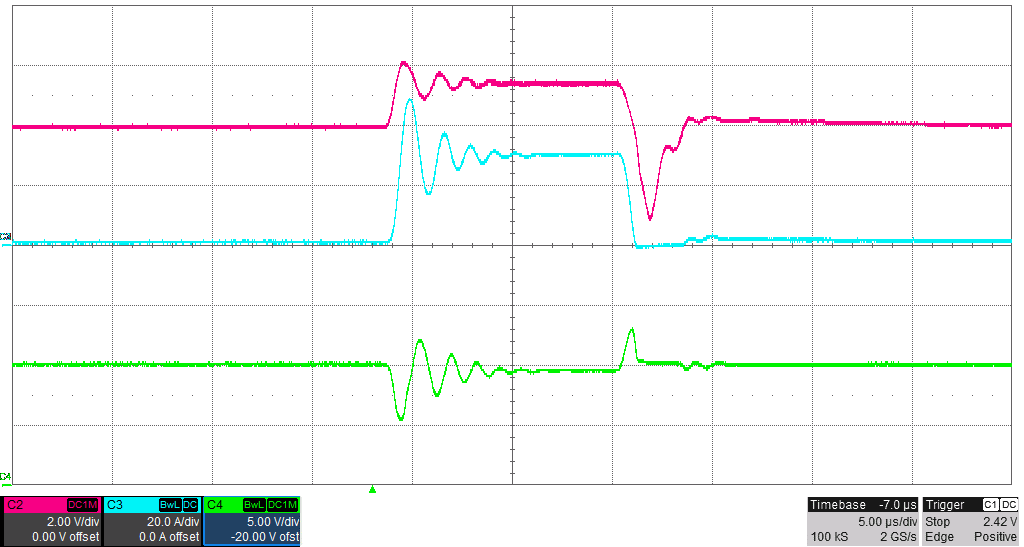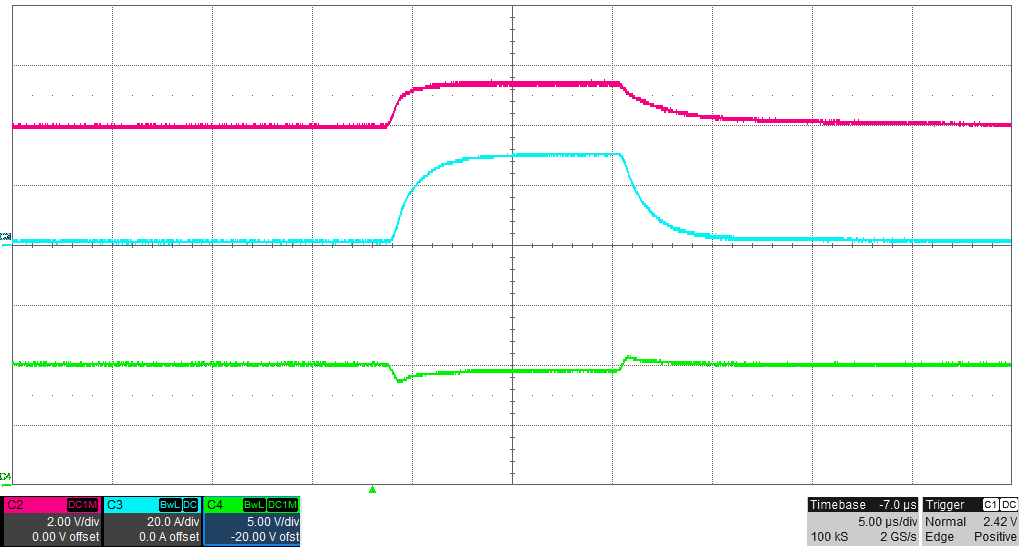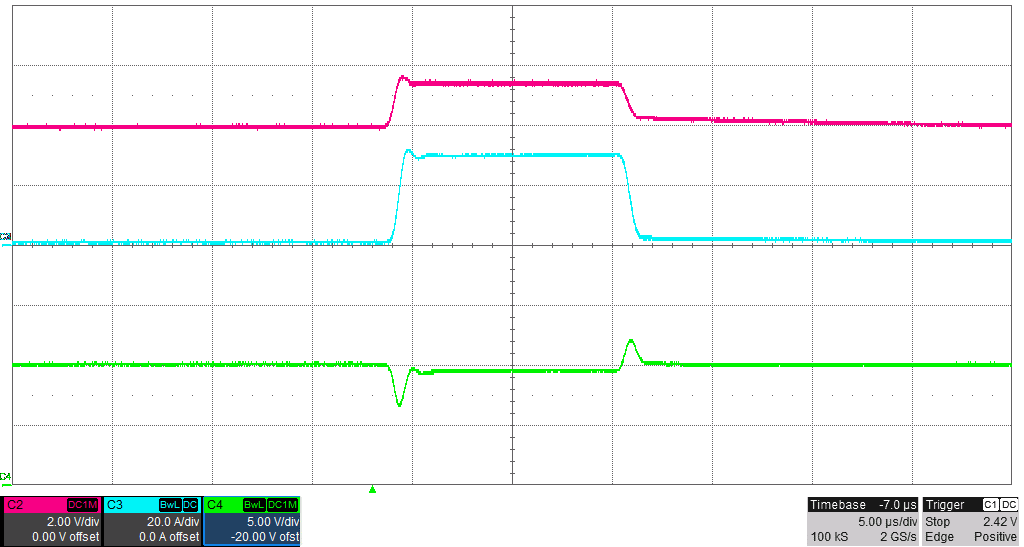TIDT293 October 2022
3.8 Settling Time Adjust
The settling time adjustment is made by turning potentiometer R43. There are no jumpers to set the range of this feature. Depending on the setup inductance and magnitude of the current step, a low R43 value can cause an unstable oscillatory state (see limitations of wiring inductance). The following data was taken on the 50-V, 125-A variant using the PSMN008-75B Q2 FET.
The following capture shows an underdamped load step by decreasing settling time potentiometer R43.
 Figure 3-14 Maximum Slew Rate, 10-V Output, 1-A to 30-A Underdamped Load Transient
Figure 3-14 Maximum Slew Rate, 10-V Output, 1-A to 30-A Underdamped Load TransientThe following capture shows an overdamped load step by increasing the settling time potentiometer R43 to the maximum value.
 Figure 3-15 Maximum Slew Rate, 10-V Output, 1-A to 30-A Overdamped Load Transient
Figure 3-15 Maximum Slew Rate, 10-V Output, 1-A to 30-A Overdamped Load TransientThe following capture shows a critically damped load step. If minimizing overshoot is needed, increase the positive and negative slew rate.
 Figure 3-16 Maximum Slew Rate, 10-V Output, 1-A to 30-A Critically Damped Load Transient
Figure 3-16 Maximum Slew Rate, 10-V Output, 1-A to 30-A Critically Damped Load Transient